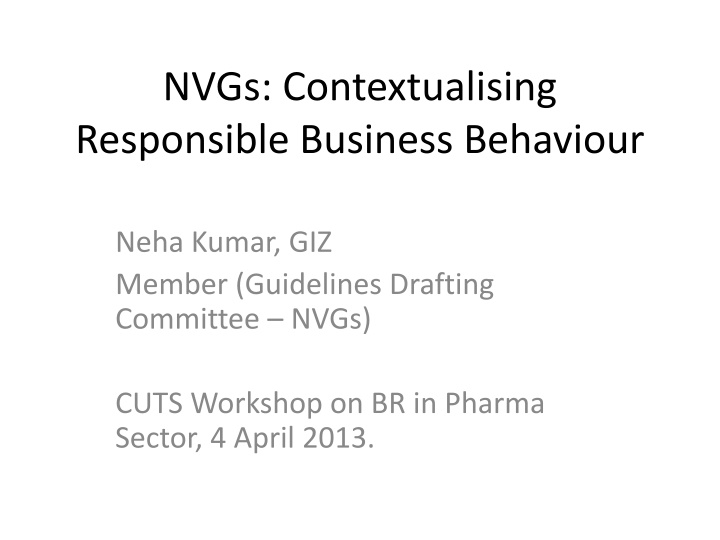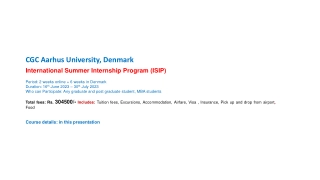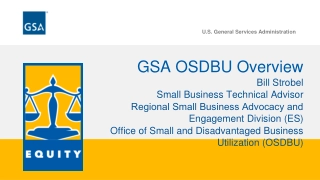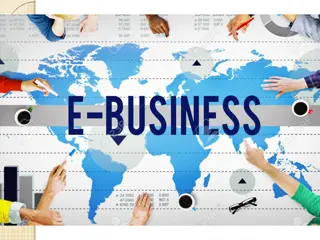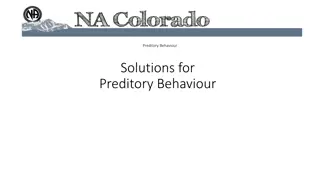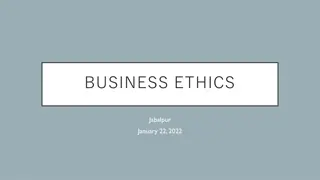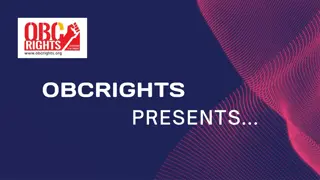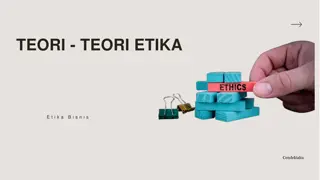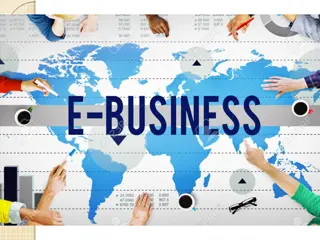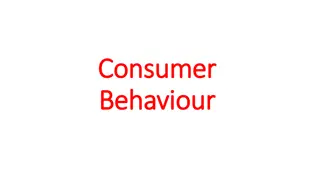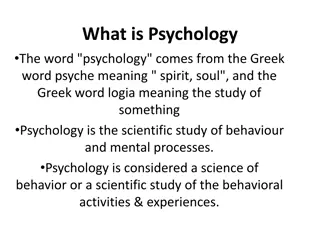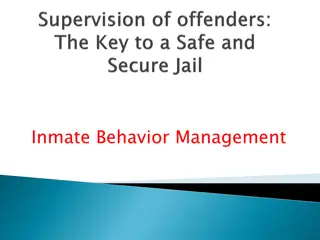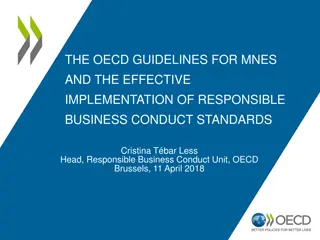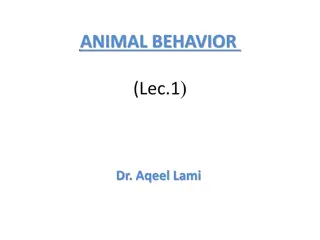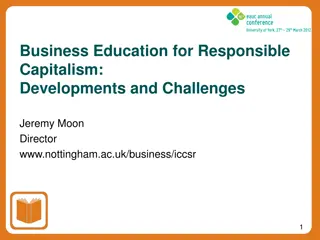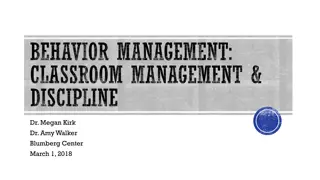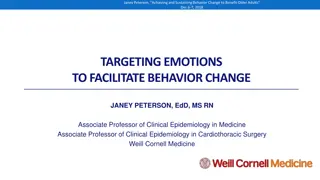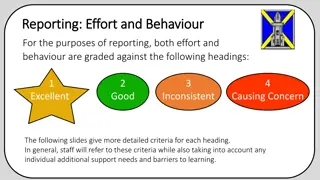Responsible Business Behavior Evolution
Stakeholders in various sectors are becoming more active, impacting businesses like Nike, Levis, Shell, Vedanta, Tata Motors, and more. The mindset of businesses is shifting towards responsibility and sustainability. The concept of Triple Bottom Line thinking is gaining momentum, emphasizing economic growth, social progress, and environmental stewardship. Embedding sustainability in business strategies is essential for staying competitive. The evolution of sustainability regulations highlights the transition from self-regulation to multi-stakeholder engagement.
Download Presentation

Please find below an Image/Link to download the presentation.
The content on the website is provided AS IS for your information and personal use only. It may not be sold, licensed, or shared on other websites without obtaining consent from the author.If you encounter any issues during the download, it is possible that the publisher has removed the file from their server.
You are allowed to download the files provided on this website for personal or commercial use, subject to the condition that they are used lawfully. All files are the property of their respective owners.
The content on the website is provided AS IS for your information and personal use only. It may not be sold, licensed, or shared on other websites without obtaining consent from the author.
E N D
Presentation Transcript
NVGs: Contextualising Responsible Business Behaviour Neha Kumar, GIZ Member (Guidelines Drafting Committee NVGs) CUTS Workshop on BR in Pharma Sector, 4 April 2013.
Stakeholders getting more active Customers: Nike, Levis and sweat-shop labour; Shell on Brent Spar. Communities: Vedanta, Tata Motors, POSCO NGOs and movements: CSE on colas, grass-root NGOs and Vedanta . Courts: Supreme Court of India on various environmental and human rights issues e.g. automobile emissions. Governments and regulators
Changing mindset of Business THEN The only role of business is to maximize profits and shareholder value there is one and only one social responsibility of business to use its resources and engage in activities designed to increase its profits so long as it stays within the rules of the game..." - Milton Friedman, Capitalism and Freedom,1962 NOW Business has a responsibility and being responsible is good business Premium will be increasingly defined in terms of sustainability and environmental compatibility - Dr. Norbert Reithofer, Chairman, BMW, 2009 Our business strategy is founded on the belief that economic growth should work for the benefit of consumers, employees, suppliers and society at large and is one where long-term value is built sustainably and equitably... Paul Polman, Chairman, Unilever, 2011 There is an increasing realisation, the world over, that development in its truest sense can only take place when economic growth fosters social equity - Y C Deveshwar, Chairman, ITC, 2011
Triple Bottom Line thinking more widespread Economic Growth Sustainability /Responsibility Social Progress Environmental Stewardship
Embedding sustainability staying ahead of the curve Why?The Business Case Competitiveness and Responsibility go together
Several Global frameworks and standards for responsible business in place
Evolution of Sustainability Regulations From self regulation to multi-stakeholder engagement 1991 2003 2004 2011 2013 2001 2008 2009 2010 Environmental CREP National Water Mission: Revised Mission Document launched in April 2009 Five stated objectives for water conservation. management Land Acquisition Bill March 2003 Launch of the CREP charter with measures including waste minimization, in-plant process control & adoption of clean technologies E-Waste Rules Environmental Protection Act Amendment to 1986 Act NAPCC June 2008 Launch of 8 National Missions on Environment and Climate Change PAT scheme: Designated consumers identified in 9 sectors Baseline SECs December 2010 Monitoring and reporting framework March 2011 India s Commitment to UNFCCC To reduce the emissions intensity of its GDP by 20-25% by 2020 in comparison to the 2005 level through domestic mitigation actions. RECs CERC regulations - January 2010 Establishment of RPO targets by various SERCs Energy Conservation Act Operationalised by BEE in 2002 Efficiency Carbon / Energy CDP Voluntary Investor led Supply chain Annual reporting Department of Public Enterprises: CSR Guidelines for CPSEs April 2010 Ministry of Corporate Affairs NVGs Companies Bill 2011 Responsibility SEBI Clause 49 Compliance with corporate governance and reporting requirements What NEXT Corporate SEBI Mandating NVG reporting
Chronology PM s Ten Point Social Charter MCA and CSR (IICA-GIZ bilateral cooperation Project) Voluntary Guidelines on CSR, 2009 Draft Voluntary Guidelines 2011 Planning Commission and Task Force on Business Regulation SEBI, MoEF, Companies Bill
Inclusive and sustainable development Maximization of shareholder and stakeholder value Business case and values based case Principles based, indivisibility of principles Supported by disclosure framework Stakeholder engagement - as a principle, as a process In sync with international norms and framework Applicability to large and small businesses Indian priorities and context GUIDING PRINCIPLES FOR NVGS
Process as important as content 09 consultations (government, Civil society, Fis, MSMEs, large businesses) Written feedback (national and international) 2000 comments (editorial, substantive, technical, adoption models) Clear and transparent criteria for feedback incorporation CONSULTATIONS AND CONSENSUS
Ethics, Transparency, and Accountability Governance structures, procedures and practices to ensure ethical conduct in transparent manner Optimal use of resources from design to disposal of the product Product Life Cycle Sustainability Maintain equal opportunities, wellbeing and skills development within business and in value chain Employees Wellbeing Systematic and continuous stakeholder engagement in a just, fair and equitable manner Stakeholder Engagement Respect and promote human rights for all concerned in business and across the value chain Human Rights Identify environmental risk and opportunity through progressive environment management system Environment Policy Advocacy Represent business issue in collective and responsible manner Align policy and frameworks in line with Country s Agenda and create value for Society Inclusive Growth Product disclosure in a truthful and factual manner and create consumer awareness Customer and Customer Value STRUCTURE: 9 PRINCIPLES, 48 CORE ELEMENTS
Guidance on the Implementation of Principles and core elements Successful implementation of the Principles and Core elements require that all of them need to be integrated and embedded in the core business processes of an enterprise. This requires, specifically that the following actions are taken: Leadership Integration Engagement Reporting
Adopting the Guidelines A suggested framework
Essential and Leadership indicators Indicators are metrics that enable businesses to self-monitor their progress on implementation of the principles. Essential level indicator is expected from every business that has adopted these guideline Leadership level indicators are expected to be put into place by those businesses which aspire to progress to a higher level in their quest to be socially, environmentally and ethically responsible
Steps on which to self assess Commitment of top management Policy deployment and process management Sensitization and training Stakeholder engagement Monitoring and evaluation Analysis and Improvement Continuous Innovation Disclosure
Application of Guidelines to MSMEs Facilitating MSMEs to recognize the business case for adopting Responsible Business practices Preference by public agencies and large players in value chains to MSME suppliers that follow BR practices Handholding MSMEs during the adoption of the Guidelines
Annual Business Responsibility Report (ABRR) Subsequent to the release of the NVGs, a committee was constituted by MCA for formulating a reporting framework in an electronic format (on MCA-21 platform) for disclosure Intended to create a credible forum wherein companies could report and disclose on what they were doing on the NVGs. Companies already publishing a BR section in their annual reports and / or producing sustainability reports (as per internationally recognized reporting frameworks such as GRI or UNGC) need to map the nine principles contained in the NVGs http://www.mca.gov.in/Ministry/pdf/Draft_Disclosure_Framework_Committee_Report.pdf
Core purpose and main aspects Better performance, business competitiveness Accountability and evidence Progressive and enabling Principle of Apply or Explain Pragmatic and light Aligned to section 135 of Companies Bill Applicable to large and small businesses
SEBI Directive on Business Responsibility Reports Mandates inclusion of BR Reports as part of the annual reports for top 100 listed entities based on market capitalisation at BSE and NSE as on March 31, 2012 Other listed entities may voluntarily disclose BR Reports as part of their Annual Reports SEBI Circular 13 Aug 2012.pdf
Way forward Creation of NVGs Support IICA in developing national guidelines that reflect a common comprehensive understanding of CSR With in NVGs in place now, the focus for the next phase of the Project is to mainstream its adoption By Phase I Phase 2 Focus: IICA will scale up the adoption of the NVGs through intensive and widespread advocacy and capacity development programs through engagement with multilipiers like the industry associations, financial institutions, government , media etc
Challenges and opportunities Different actors at different stages of understanding /adoption Cross cutting themes coordination MSMEs Synergised action National actors - Centre, state, sectors International actors and instruments Incentivisation and enabling environment Demonstration and innovation Disclosure as means not an end Bridge between Corporate Governance and BR
